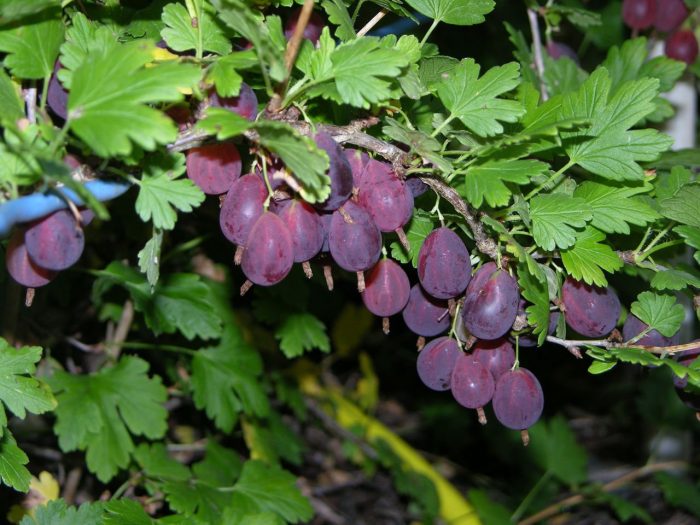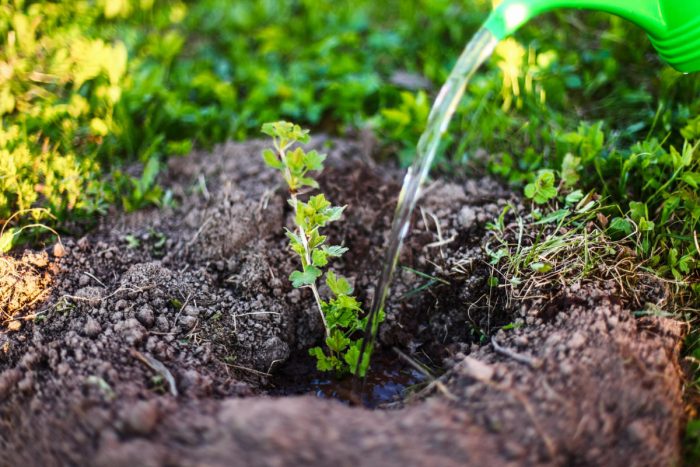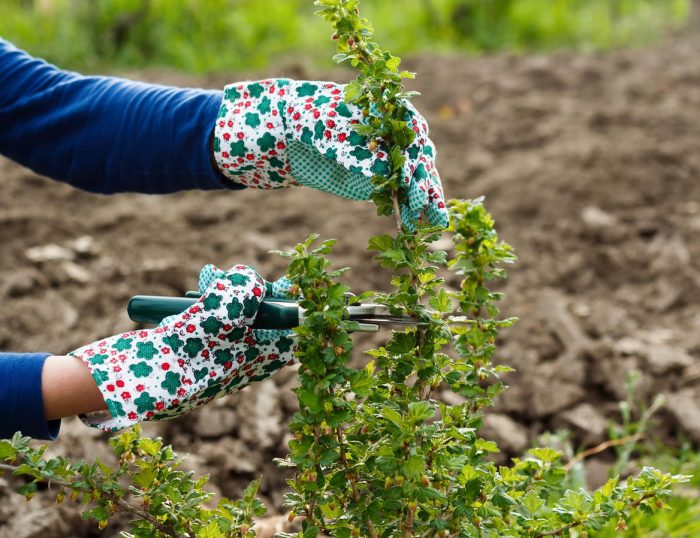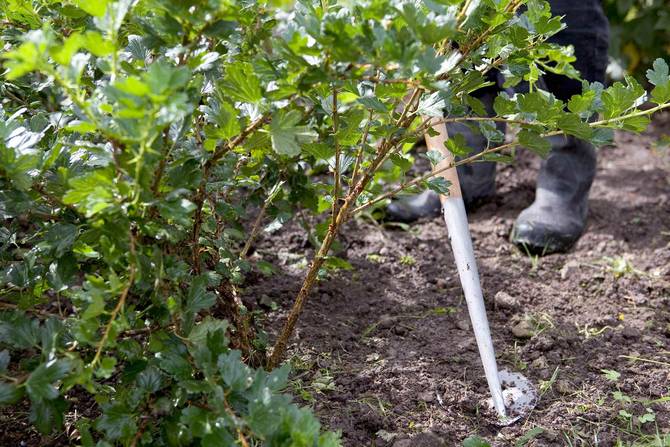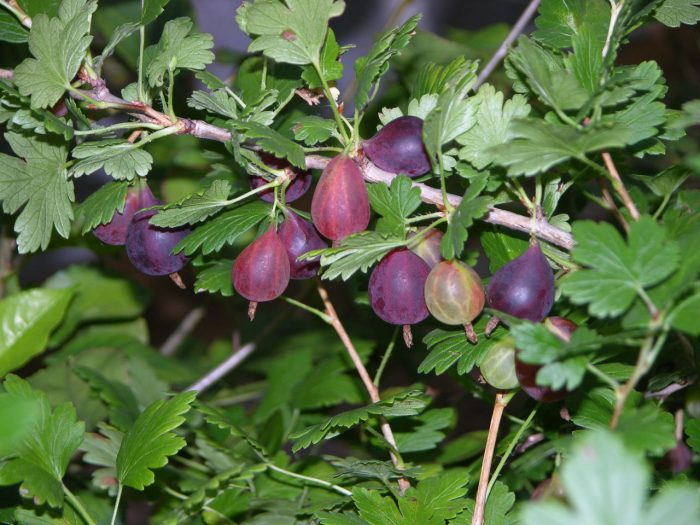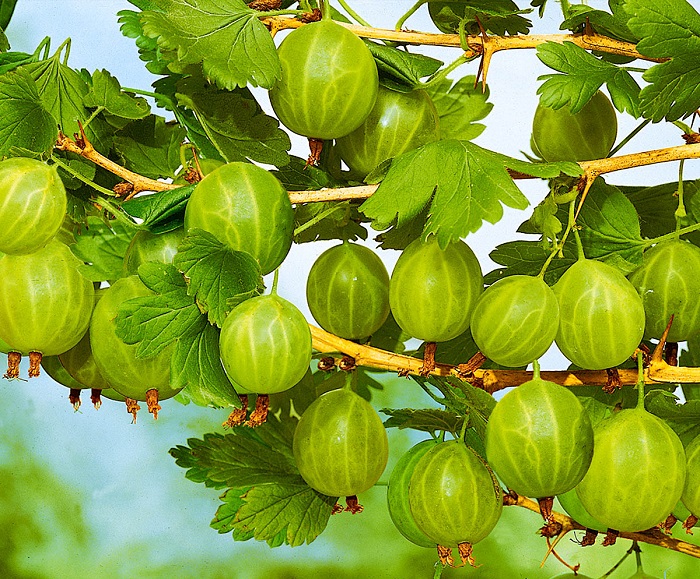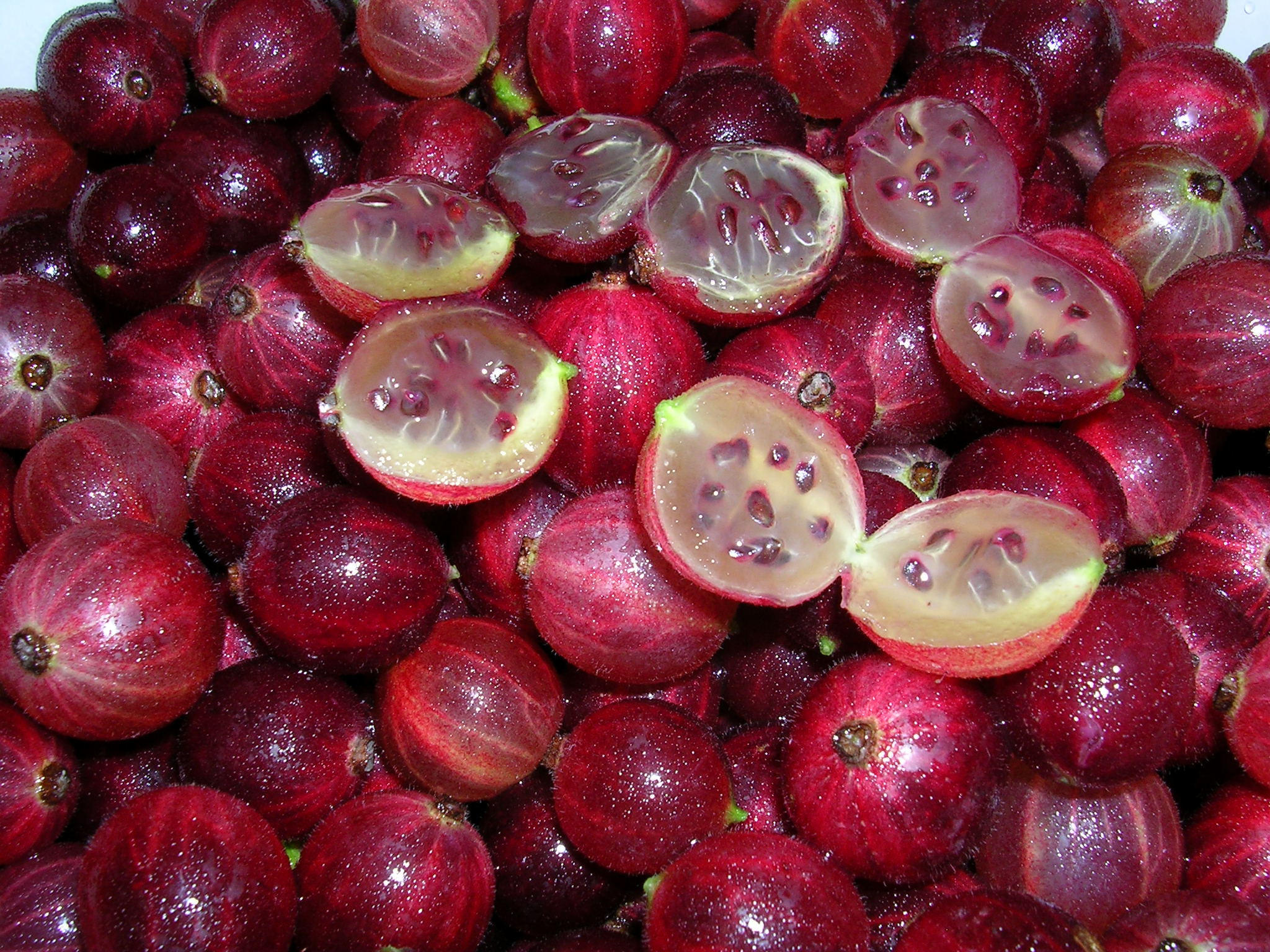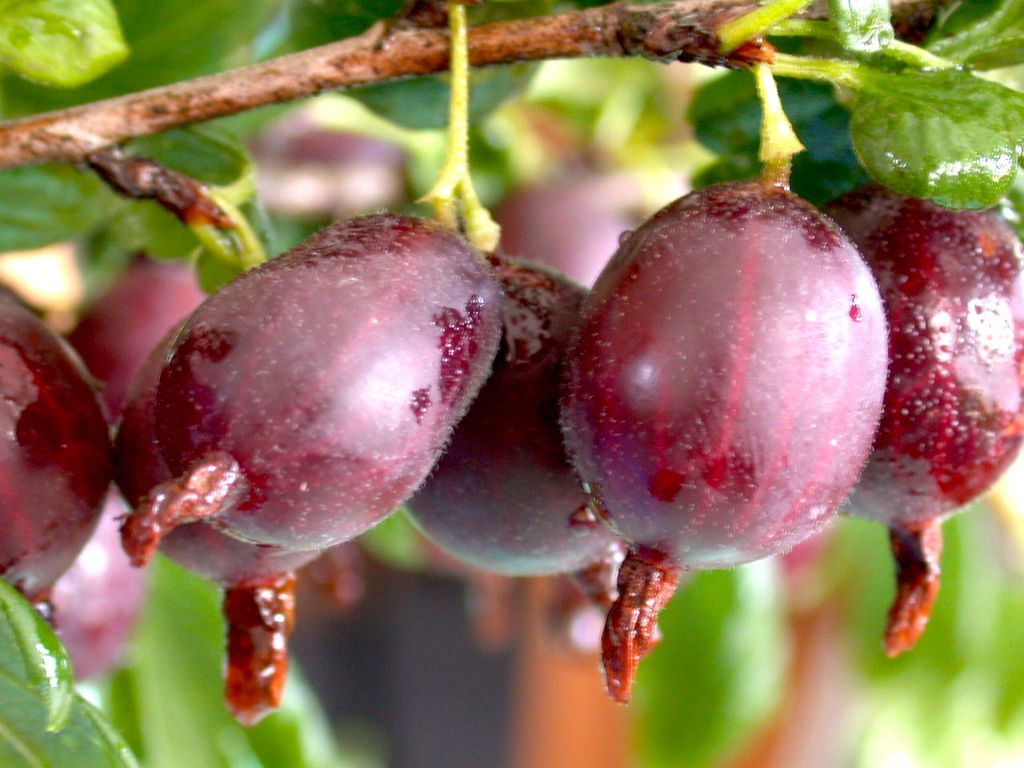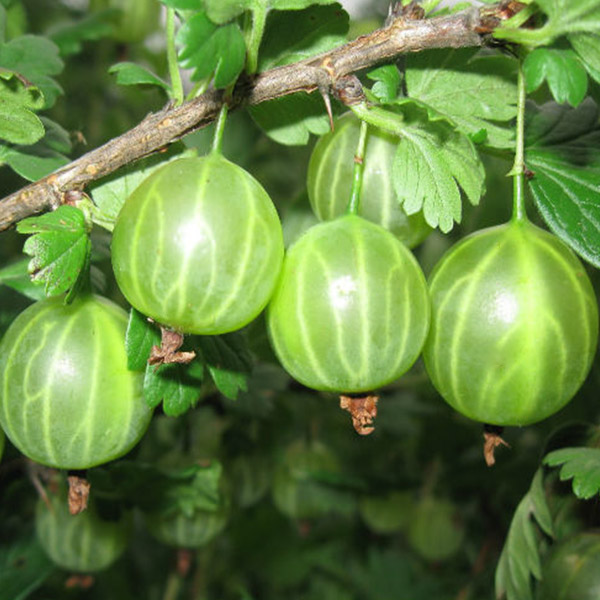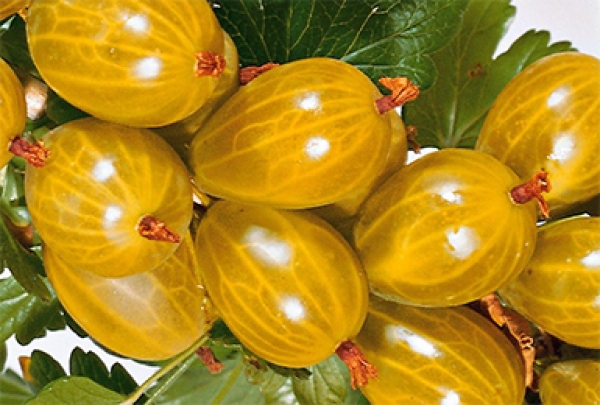Content:
Gooseberry Grushenka is a representative of thornless species. It is popular among gardeners for its unpretentiousness, sweet taste characteristics, fleshy berries, and ease of care.
History
Grushenka has existed not so long ago. It was bred in the eighties of the twentieth century. Breeders at the NI Institute tried to create a cold-resistant variety with large and sweet fruit and no sharp thorns. After several years of experiments, species with small thorns were obtained: Eaglet and Kolobok. After this discovery by crossing 12 types of culture, Grushenka appeared. The variety got its name for its shape, which resembles a rounded pear.
Description of the gooseberry variety Grushenka
Fruits are elongated, purple in color. The shape of the berry resembles a pear. Ripening period is medium late. Harvesting begins from late July - early August. Fruits from the branches are not sprinkled. Berries are medium in size, weighing from 4-6 grams. The taste of the pulp is sweetish with mild acidity. The yield is high - 6 kilograms per bush. Fruiting lasts up to twenty years.
Flowering - 2-color and 3-color inflorescences, begins early. Ovaries are formed along the entire length of the branches in both young and adult plants.
The bush is medium-sized, not very spreading, thornless. The branches are lowered to the ground. When the fruits ripen, it is necessary to prop up the shoots.
High resistance to frost. It tolerates temperatures up to -26 degrees. Resistance to spring frosts - even if they came during flowering, this will not affect the harvest. Therefore, this species is recommended for growing in cold regions and the Moscow region. Grushenka also tolerates too hot weather.
The berries are stored for a long time and tolerate transportation well.
Agricultural technology of cultivation
In order to grow Grushenka, all agrotechnical work must be done correctly.
Sapling selection
During the purchase, Grushenki is examined:
- The condition of the roots and the place a little higher - the neck. There should be many small appendages. They should not be damaged, especially without peeling - this is a sign of freezing.
- The root collar for the absence of tinder fungus.
- The root system of the plant should not be exposed to the sun. The seedlings should be placed in a box of soil, or at least covered with a wet cloth.
- For the presence of a coma with the ground in two-year-old seedlings, since they must be stored and transported with it.
- The branches should be medium spread.
An annual plant is considered the best for planting.
Landing
When choosing a landing site, you need to consider:
- Lighting. Sun-loving bush.
- Take into account the spreading. Leave more space between nearby plants.
- The bush does not like transplanting. You must immediately choose a permanent place.
Soil type - grows well on clay and sandy soils, other lands are also suitable, only swampy ones are unsuitable.
When preparing the site:
- Dig up and remove weeds;
- Organic fertilizing is introduced: manure or humus. If the land is very poor, fertilizer is poured directly into the planting hole.
The period for disembarkation is spring and autumn. It is optimal to plant a bush in the fall in early October or 4 weeks before frost. For a seedling, such terms are favorable and contribute to a good harvest.
Disembarkation stages:
- Soak the roots of the plant in a solution of potassium humate before planting. Dig a hole 30 cm deep and place the seedling at a slight slope. Align the roots.
- Sprinkle with earth and tamp.
- Drizzle.
- Mulch with dry grass or sawdust.
After disembarkation in spring or autumn they are pruned. Leave 35 cm high. The plant does not thicken much and is not spreading, so pruning is done infrequently. Saplings do not shorten less than a year.
It is necessary to water abundantly in the first 4 weeks after planting - a bucket of water per bush. It happens that watering is necessary 2 times a week when the weather is hot.
It is necessary to loosen the soil around the trunk. 7 cm recede from the shoots. You also need to remove the weeds.
Preventive treatment
In autumn, after harvesting or in early spring, pest control is carried out. The plant is unpretentious, but if the bush is planted in a wetland, diseases may occur. The most common disease is spore fungus. The bushes are sprayed with fungicides - substances that prevent the development of fungus. If the plant is already affected, then the drug is applied directly under the roots. Processing is allowed no more than 2 times a year, otherwise the chemicals will affect the composition of Grushenka.
Another pest is a spider mite. When the fruits have not yet appeared, you need to process the shrub with an infusion of wormwood herb.
Top dressing
Potash and phosphate fertilizers must be applied. Feeding is carried out three times per season. Nitrogen fertilizers are applied before intensive growth begins. Before setting the buds, add phosphorus and potassium. At the end of fruiting, they are fed with diluted manure. Humus is mulched around the roots - this is a permanent fertilizer.
Frost protection
It is necessary to shelter in a harsh and little snow winter. They use straw, sawdust, non-woven material. Cover the structure with a dense film and support it with stones.
Props
Required for large yields. 3 pegs are driven in at a distance of 25 cm from the bush. A triangle is formed in shape. A rope is tied to the boards, onto which the branches are tilted. The height of the sticks and strings is periodically changed.
Reproduction
A furrow is dug, an annual branch is tilted into it. Fasten it with a crochet hook made of wood or aluminum wire. Sprinkle with earth. Water thoroughly. The soil must be loosened and moistened throughout the season. After a year, the seedling is separated, dug up and transplanted.
The second way is division with vertical layers. Dig up the soil around the bush. Compost is brought in, watered. Inside the bush, make a mulching pillow 30 cm high. The whole season is fed with mullein. Roots will appear in the fall. Can be transplanted.
The division of a 5-year-old bush is carried out in the fall. The plant is dug up. Pruning shears are cut into several parts, cut off, leaving young shoots and then planted.
Advantages and disadvantages
Grushenka's advantages:
- Resistant to frost, immune to high temperatures;
- The plant is unpretentious;
- High productivity;
- Saplings tolerate transportation well;
- Disease resistance;
- The crop is thornless, so it is convenient to harvest;
- Fruits are dense, do not spoil during transportation.
Disadvantages:
- Fruits grow very densely on the branches;
- Heavy branches, branches often break;
- Raw taste is sour, sugar must be added;
- The fruits ripen quickly and begin to wither, so they need to be cut off immediately.
Thornless gooseberry Grushenka is an unpretentious, high-yielding plant that attracts by its appearance and ease of cultivation.
